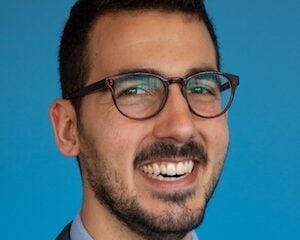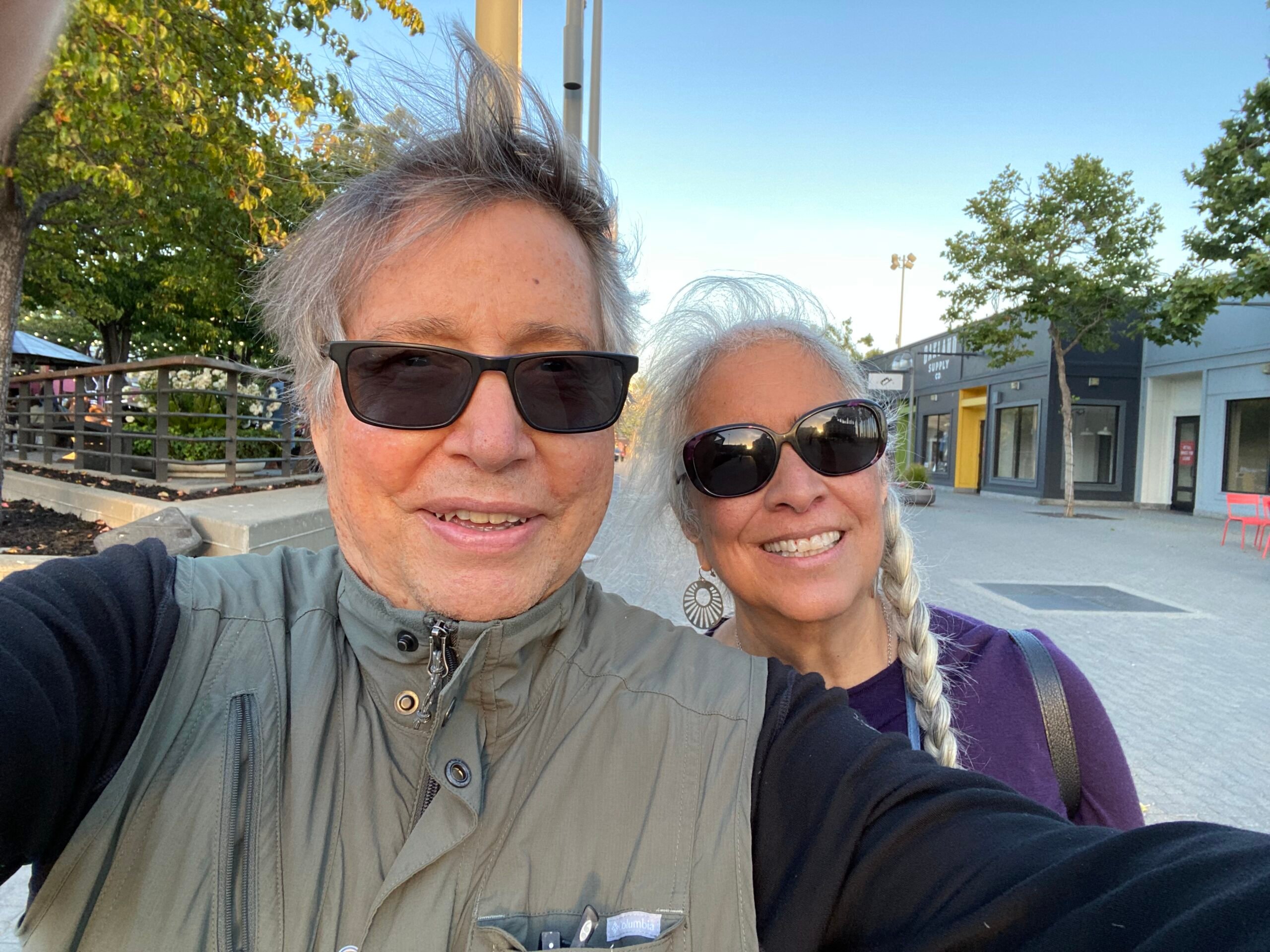Audio producer David Isay: Curiosity . . . respect . . . trust

Isay came from a family of shrinks. Not only was his father a psychiatrist, but also his mother’s parents and several aunts and uncles. “You learn how to listen to people,” he says. “It definitely influences the way I do stuff.”
This is David Isay talking with Steve Roberts on The Diane Rehm Show last fall. They are discussing “The Sunshine Hotel,” a documentary that Isay had recently completed. Isay is an extrovert, an enthusiast. He scatters the words “amazing” and “HUGE” throughout his conversations about people, concepts and radio programs — particularly those about people. He seems to make friends for life, and since this includes nearly all the subjects of his documentaries over the last 10 years, the volume of his daily communication is enormous.
All this activity and the public attention being drawn to his increasingly successful career, stands in marked contrast to a somber childhood in New Haven, where he lived with his mother, his brother (a political consultant he still calls “my little brother”), and his father, a psychiatrist. Now, at 35, he glumly recalls those early, dark years: “Until I was 16, I spent most of my time zoning out on television and failing out of a private school. I was a pretty miserable kid. I don ’t want to seem negative, but this was a time when I was really unhappy. Anybody who seemed to think that I had any value whatsoever was a big deal to me.”
Someone who did was Peter Walsh who, with his wife, ran a drama camp. He also ran a bar. “At that point, I felt I had no redeeming qualities, and this guy thought I was hugely talented, I don ’t know why. I used to hang out with him at his bar. He had this huge, huge influence on me. It was a big deal.”
About this time, Isay ’s mother became associated with a publishing firm (Basic Books) and the family moved to New York City. There Isay was enrolled in Friends School, which turned his life around. “I don ’t think I would have gotten into college if it were not for Friends. I was really lucky.”
The college was New York University where he majored in psychology. He planned to take a year off following graduation and then enter medical school. But an unexpected invitation propelled him toward his present profession. Walking in New York ’s East Village in 1988, he came upon a storefront Museum of Addiction, the beginnings of what its creators — a couple of recovered addicts with AIDS — hoped would one day become a large and prestigious institution. In an effort to bring some attention to their plans, Isay called every radio and TV station in the city.
The only broadcasters willing to help were at Pacifica ’s WBAI; the station manager suggested that Isay find a tape recorder and cover the story himself, which he did. The result was a six-minute segment broadcast by WBAI and, luckily, heard by NPR producer Gary Covino as he was driving through New York. Covino, who soon became Isay ’s professional mentor (“He taught me how to break the rules,” says Isay), bought the program for NPR at the price of $50, and a new radio career was born: “It was magical. I knew I had found what I wanted to do.”
It was a time of life-changing events for Isay. Another caused him to face a personal perplexity with a long-term effect on his work. He explains: “The big drama in my life was [discovering] that my father, who is a great guy, was gay, and a gay activist. That was a complicated thing for me. It had a big influence on my doing stories about underdogs, because my dad was kind of an underdog . . . and it gave me an appreciation for that. It also influenced my trying to find out about secrets, because my dad being gay was a big secret, and I’m not so sure it was such a great idea to keep it for as long as it was kept.”
One of his earliest programs to gain wide recognition was “Stonewall,” the story of a violent confrontation between New York police and gays in Greenwich Village in 1992.
“I’m interested in eccentrics, dreamers, visionaries, believers,” says Isay. “They all have a long-term devotion to something. Most of these people have spent their lives refusing to give up. There will always be such determined people. They give meaning to what it means to be alive.”
Traces of psychiatry and psychology are everywhere in the style and substance of Isay ’s programs. “I came from a family of shrinks,” he says. Not only was his father a psychiatrist, but also his mother ’s parents and several aunts and uncles. “You learn how to listen to people,” he says. “It definitely influences the way I do stuff. People talk to me because I ’m curious. Most people are happy to tell their stories if they feel safe with the person they ’re telling them to. It ’s a matter of trust and honesty. Everyone in the world wants to be known and recognized for what they have done.”
In 1994 Isay established the nonprofit Sound Portraits Productions, and two years later he published the illustrated book Holding On (W.W. Norton). It included a memorable profile of a heroin addict and former prostitute dying of AIDS, as well as stories about Christian fundamentalists ritually handling rattlesnakes in Appalachia, former convent girls and flophouse residents — with pictures by the exceptionally gifted photographer Harvey Wang, who has also contributed to his subsequent publications, Our America (Scribners, 1997) and Flophouse (Random House, 2000). Most of his programs now include additional media components — publications, CDs, tape cassettes and web audio.
“When you spend so much time looking for these stories,” he explains, ” it can be frustrating to put them on the air where they go out into the ionosphere and…that ’s it, it ’s done. But being able to do books allows me to do something more permanent, and that ’s really important to me.”
Friends of Isay frequently describe his careful, almost obsessive editing, causing him to go over and over a sequence for hours, to bring in the sound of a ringing phone at precisely the right second; to get everything exactly right.
“The first movie I completely fell in love with was Diner,” he remembers. “It had become a huge influence on me because of the attention to detail, the architecture of the movie. Not only were the people sitting in the booth next to the main action exactly right, but also those in the third, fourth and fifth booths. Every detail was so perfectly constructed.”
Often, of course, Isay ’s editing is reaching for an enhanced dramatic effect through silence or sound. One young listener recently observed that if some of his programs (“Witness to an Execution,” for example) were “performed” on a dark stage, they would produce a profoundly dramatic effect upon a theater audience. One of his production associates has remarked that the results of all this fine-tuning would probably not be of the least interest to most of the radio audience, but greatly important to him. Isay attributes some of this exacting style to his undergraduate education that forced him “to pay attention, to focus, to be meticulous.”
He has also said that he learned from his mother, a prestigious book editor. (When asked recently what his parents thought of his work, he replied without hesitation, “They love it. They’re very progressive. They like that I ’m trying to do this.”)
While he ’s emphatic about not being a religious person, he says he ’s “totally into being a Jewish person.” He is not married but shares a close personal and professional relationship with Stacy Abramson, a woman with whom he has co-produced many programs. His fiction reading is, he says, almost nonexistent, except for ’”Phillip Roth and the other usual suspects.” He also enjoys listening to actors reading short stories in New York ’s Symphony Space Theatre, stories subsequently edited for WNYC ’s lively broadcast series Selected Shorts.
Not surprisingly, he has great admiration for Chicago ’s masterful oral historian, Studs Terkel, now 88: “Amazing! He ’s a hero!” Among nonfiction writers, Joseph Mitchell, a New Yorker writer, now deceased, looms largest. The original title for Isay’s program, “Flophouse” was “Up in the Old Hotel,” the title Mitchell gave to his collection of New Yorker articles that many regard as a contemporary classic. When he first read it, Isay retraced Mitchell ’s steps through the places Mitchell described.
On the subjects of radio and making radio programs with the help of new technologies, he is just short of messianic: “Everybody has the capability to make programs now. I know it ’s picking up steam because I ’m running around lecturing, and we have a lot of very talented interns coming in here. People are excited about radio. They ’re turning to radio because it ’s so cheap. Stacy started this program out on Riker ’s Island, teaching kids to make their own radio documentaries on the web. With a $1,500 iMac computer, she has more powerful editing facilities in her hand than I had in my whole studio five years ago.
“Public radio is great. You can ’t beat that pop for your program. Over 7 million people. And I think the Web is a huge deal ’ HUGE!”
In today ’s superheated communication world, dominated by entertainment, it is unlikely that those who make radio documentaries will also make a fortune. But that seems not to trouble Isay. Quoting a friend, he says, “If you ’re doing what you like to do, and you believe in it, there will always be a small auditorium of people who appreciate it. Then you should be very happy. That should be all you want.”
David Isay, along with a growing number of gifted documentary-makers, are now experiencing the satisfaction of creating serious inquiries into contemporary events and, especially, human nature. Their reports illuminate how we live today and lived in the past. The best of them will inform the future with wisdom.






